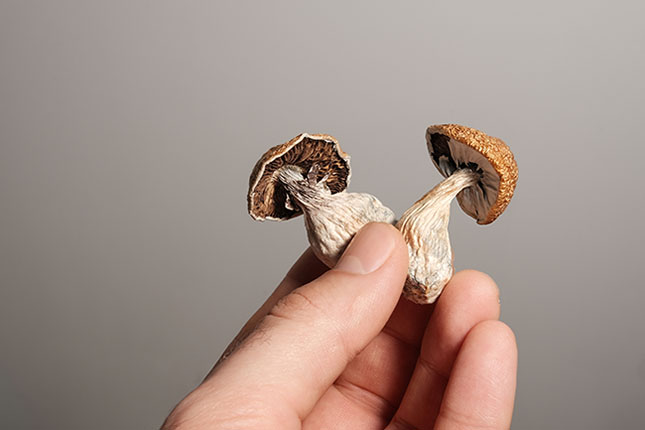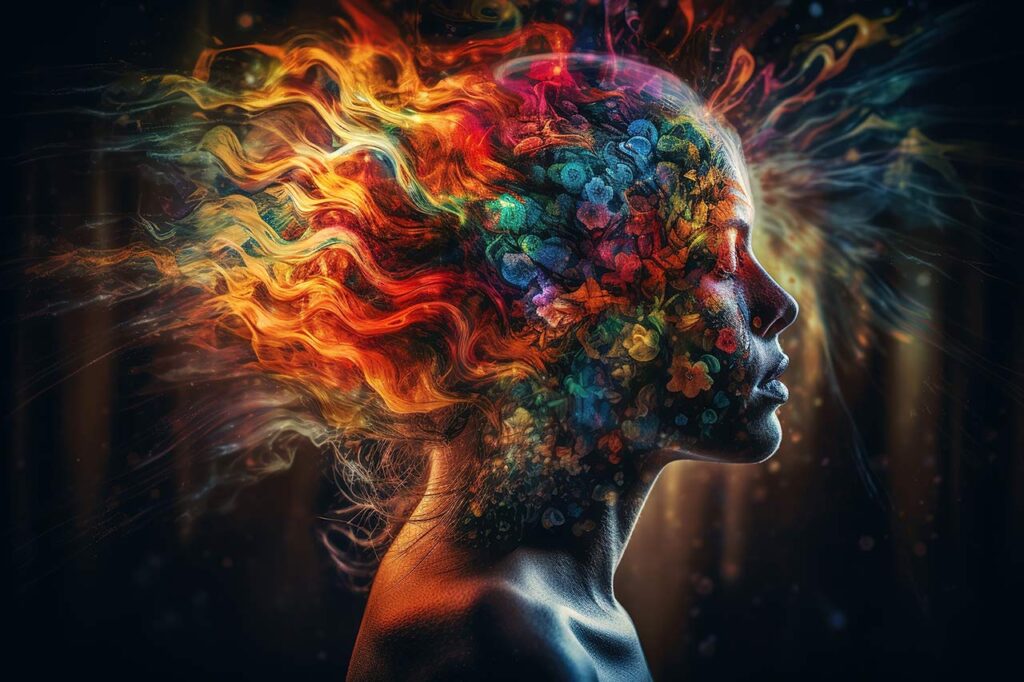Get ready to dive deep into the intriguing world of psychedelic-assisted therapies, which are generating plenty of buzz in the mental health landscape. While we’ve only begun to scratch the surface of their potential, emerging research suggests psychedelics, including MDMA, ketamine, psilocybin, and LSD, may offer relief for various mental health conditions in a therapeutic setting.
Therapy with substance or Psychedelic-assisted therapy not only relies on the substance as a “cure-all” approach, rather the substance allows space for the therapy to delve into repressed, stuck or uncharted emotional waters. Psychedelic-assisted therapy (PAT), borrows from numerous therapeutic modalities. Drawing from eclectic techniques such as Internal Family Systems, somatic trauma therapies, and trauma-focused therapies, each approach aims to enhance psychological flexibility and deepen the spiritual, emotional, intellectual and biomechanical effects of psychedelics.
In a time where traditional treatments often fall short, researchers are turning over every stone, and in this case, that stone might just be a “magic” mushroom.
MDMA (3,4-methylenedioxymethamphetamine):
Perhaps best known for its recreational use, is reemerging in the spotlight as a potential ally in the fight against PTSD. MDMA, often known as ecstasy, falls under a category called enactogens or empathogens. MDMA influences several neurochemical systems, including serotonin, dopamine, norepinephrine, cortisol, and oxytocin. In the controlled, nurturing environment of therapy, MDMA could assist by unlocking a profound emotional openness, reducing fear and defensiveness, and facilitating trust. It’s like the bridge that could reconnect patients with therapists, potentially leading to significant reductions in PTSD symptoms.
MDMA-assisted therapies have shown particularly promising results in the treatment of post-traumatic stress disorder (PTSD), especially among war veterans. This population faces a silent crisis: according to the U.S. Department of Veterans Affairs, an average of 22 veteran suicides per day were reported in 2010, and although that number decreased to 20 per day in 2014, it still represents an alarming reality. In recent studies, up to 71% of patients who underwent MDMA-assisted therapy no longer met the diagnostic criteria for PTSD. These outcomes have inspired significant hope within the medical community and among those living with the disorder. However, it is important to emphasize that the FDA has not yet granted final approval for its clinical use.
Ketamine

Ketamine, belonging to the family of dissociative anesthetics, can induce psychedelic effects at lower, non-anesthetic doses. Originally an anesthetic, ketamine is breaking barriers in treating depression, addiction, obsessive compulsive disorder (OCD), and PTSD. Its mechanisms are intriguing: blocking NMDA receptors, activating AMPA receptors, which in turn enhance synaptic plasticity and help control how your neurons, or brain cells, communicate with each other, especially in processes like learning and memory.
This unlikely hero has shown rapid antidepressant effects, creating new neural connections, kind of like rewiring a circuit board. But just like the precision required in electronics, we must approach Ketamine therapy with vigilance, considering long-term efficacy, safety, and optimal dosing protocols.
Psilocybin

The magic ingredient in certain species of mushrooms. Recently, it’s been showing promise in treating depression, anxiety, obsessive-compulsive disorder, and substance use disorders, and even end-of-life distress.
Working its magic on the serotonin system – serotonin 5-HT2A receptors, Psilocybin can promote neuroplasticity, enhance psychological flexibility, boost creativity, foster mindfulness, and encourage social connectedness. By inducing mystical experiences and shifting metaphysical beliefs, these substances may infuse life with renewed meaning and promote positive behavioral changes.
LSD (lysergic acid diethylamide):
A compound known for its dramatic effects on perception, cognition, and emotions. Although its therapeutic potential is still being uncovered, early hints suggest that LSD-assisted therapy might offer benefits in treating addiction, anxiety, and depression. LSD acts on numerous serotonin receptors, altering neural activity and promoting altered states of consciousness, LSD could potentially add another dimension to therapy.
To make it easier to compare these substances at a glance, take a look at this overview guide of the uses, neuroscientific effects, experience and contraindications of each (resource: Beckley Academy; Foundations of Psychedelic Assisted Therapy. Module 3):
Effective and Promising Uses
| Ketamine | Psilocybin | MDMA |
thoughts
|
depression
anxiety
disorder
|
|
Mechanisms & Neuroscientific Effects
| Ketamine | Psilocybin | MDMA |
|
|
|
|
|
|
Timeline of Experience
| Ketamine | Psilocybin | MDMA | |
| Onset |
|
20-40 minutes | 30 to 75 minutes |
| Peak |
|
60-90 minutes | 1 to 3 hours |
| Return |
|
30 – 60 min. | Trials typically offer a second dose around the 2-hr mark that extends the return. |
| Residual |
|
5 – 8 hours | Up to 7 days |
Participant Experience – Positive
| Ketamine | Psilocybin | MDMA |
|
|
|
Participant Experience – Negative
| Ketamine | Psilocybin | MDMA |
|
|
|
Contraindications
| Ketamine | Psilocybin | MDMA |
|
|
|
A Promising Future
The underlying biomechanical science is as fascinating as it is complex. These substances may induce neuroplasticity (think brain flexibility), modulate brain networks, and even trigger mystical-type experiences that could contribute to psychological insights, empathy, and a sense of connectedness. All of which may be grounds for life-changing and long-term therapeutic potential.
However, let’s not forget our due diligence. As exciting as these preliminary results may be, they’re based on limited studies. Widespread, robust research is crucial to establish safety, efficacy, optimal dosing, and long-term effects. Furthermore, professional supervision and appropriate screening are paramount to ensure we minimize risks and maximize benefits. As well as safety considerations and contraindications for various medications and particularly for individuals with pre-existing mental health conditions.
Psychedelic-assisted therapy is an exciting field that’s still in its infancy, as we rediscover the vast world of altered states of consciousness. With continued research and a measured approach, we can nurture its growth, exploring its potential in revolutionizing mental health treatment. As we do so, let’s remember to honor and integrate indigenous perspectives and ethical considerations to ensure a holistic approach to psychedelic therapy training. Stay tuned for more in this fascinating journey of discovery and healing.
Disclaimer: While scientific research into psychedelic-assisted therapies continues to show promising results, it is essential to note that, as of now, all psychedelic substances, except for ketamine, remain classified as illegal under the United States Controlled Substances Act, and therefore also in Puerto Rico. The FDA (Food and Drug Administration) has not yet approved the clinical use of compounds such as MDMA or psilocybin, and their medical use remains restricted. Ketamine is currently the only psychedelic substance legally approved for therapeutic use under medical supervision in the U.S. and Puerto Rico.
Resources
- Aleksandrova, L. R., & Phillips, A. G. (2021). Neuroplasticity as a convergent mechanism of ketamine and classical psychedelics. Trends in Pharmacological Sciences, 42(11), 929–942. https://doi.org/10.1016/j.tips.2021.08.003
- Ardito, R., & Rabellino, D. (2011). Therapeutic alliance and outcome of psychotherapy: Historical excursus, measurements, and prospects for research. Frontiers in Psychology, 2270. https://doi.org/10.3389/fpsyg.2011.00270
- Bedi, G., Phan, K. L., Angstadt, M., & de Wit, H. (2009). Effects of MDMA on sociability and neural response to social threat and social reward. Psychopharmacology, 207(1), 73. https://doi.org/10.1007/s00213-009-1635-zf
- Bogenschutz, M. P., Forcehimes, A. A., Pommy, J. A., Wilcox, C. E., Barbosa, P., & Strassman, R. J. (2015). Psilocybin-assisted treatment for alcohol dependence: A proof-of-concept study. Journal of Psychopharmacology, 29(3), 289–299. https://doi.org/10.1177/0269881114565144
- Carhart-Harris, R. L. (2018). The entropic brain—Revisited. Neuropharmacology, 142, 167–178. https://doi.org/10.1016/j.neuropharm.2018.03.010
- Carhart-Harris, R. L., Bolstridge, M., Day, C. M. J., Rucker, J., Watts, R., Erritzoe, D. E., Kaelen, M., Giribaldi, B., Bloomfield, M., Pilling, S., Rickard, J. A., Forbes, B., Feilding, A., Taylor, D., Curran, H. V., & Nutt, D. J. (2018). Psilocybin with psychological support for treatment-resistant depression: Six-month follow-up. Psychopharmacology, 235(2), 399–408. https://doi.org/10.1007/s00213-017-4771-x
- Carhart-Harris, R. L., Bolstridge, M., Rucker, J., Day, C. M. J., Erritzoe, D., Kaelen, M., Bloomfield, M., Rickard, J. A., Forbes, B., Feilding, A., Taylor, D., Pilling, S., Curran, V. H., & Nutt, D. J. (2016). Psilocybin with psychological support for treatment-resistant depression: An open-label feasibility study. The Lancet Psychiatry, 3(7), 619–627. https://doi.org/10.1016/S2215-0366(16)30065-7
- Carhart-Harris, R. L., Erritzoe, D., Haijen, E., Kaelen, M., & Watts, R. (2018). Psychedelics and connectedness. Psychopharmacology, 235(2), 547–550. https://doi.org/10.1007/s00213-017-4779-2
- Carhart-Harris, R. L., & Goodwin, G. M. (2017). The therapeutic potential of psychedelic drugs: Past, present, and future. Neuropsychopharmacology, 42(11), 2105–2113. https://doi.org/10.1038/npp.2017.84
- Dolder, P. C., Schmid, Y., Müller, F., Borgwardt, S. J., & Liechti, M. E. (2017). LSD acutely impairs fear recognition and enhances emotional empathy and sociality. Neuropsychopharmacology, 42(11), 2318–2327. https://doi.org/10.1038/npp.2017.79
Unite for Healing: Your Contribution, Puerto Rico's Transformation.
Embark on a journey of transformation with the Pravan Foundation. Your generous donation becomes a beacon of hope, illuminating the path to mental wellness for countless individuals in Puerto Rico. Together, let’s break down barriers, ushering in a new era of mental health and well-being.
Make a difference today – your contribution is the cornerstone of change, healing, and renewed hope across the island. Join us, and be the change that Puerto Rico needs. Unite for healing, unite for transformation, unite for a brighter tomorrow.


